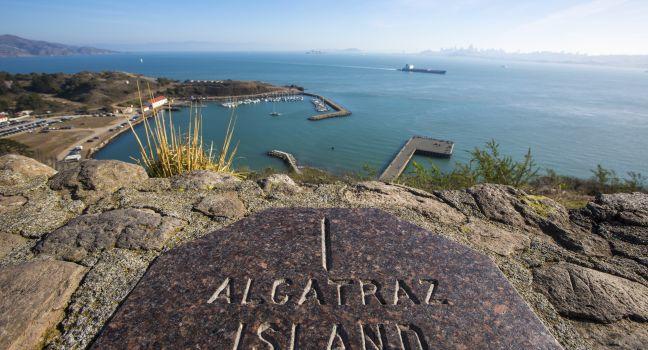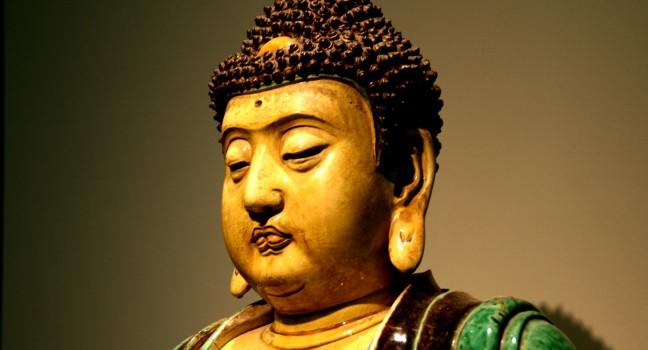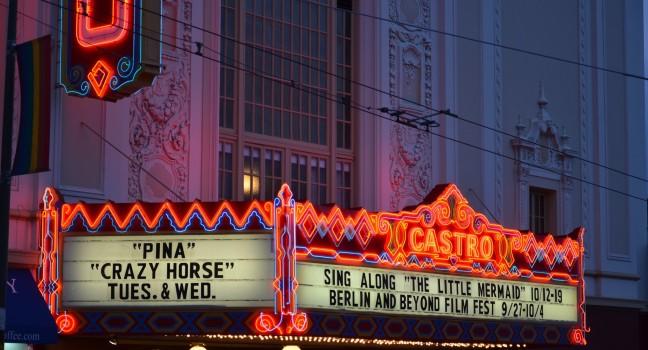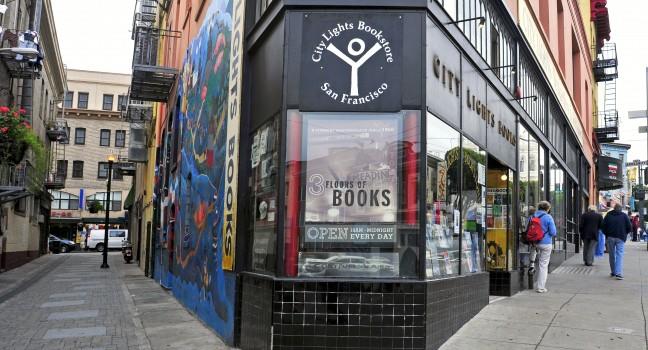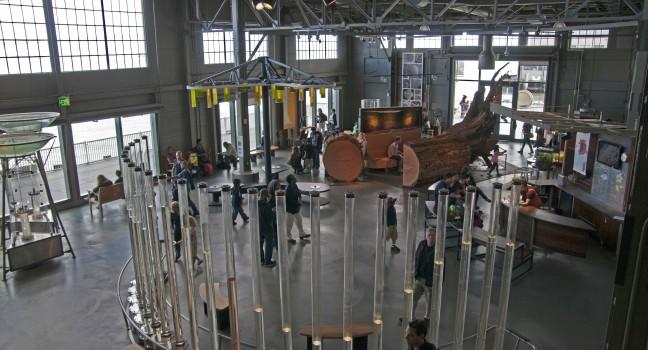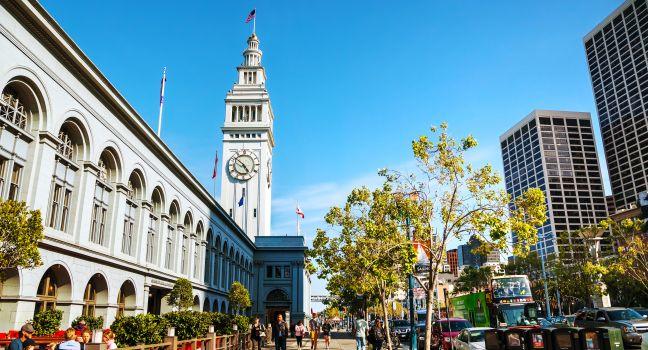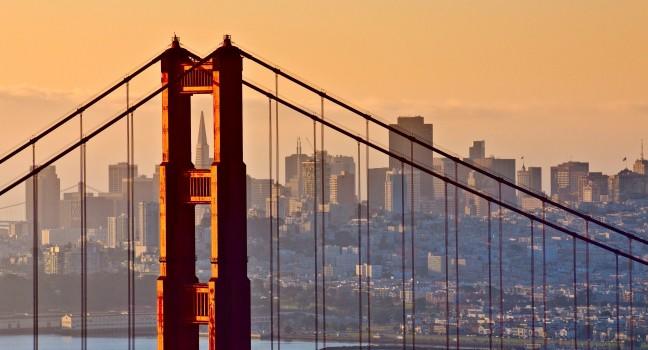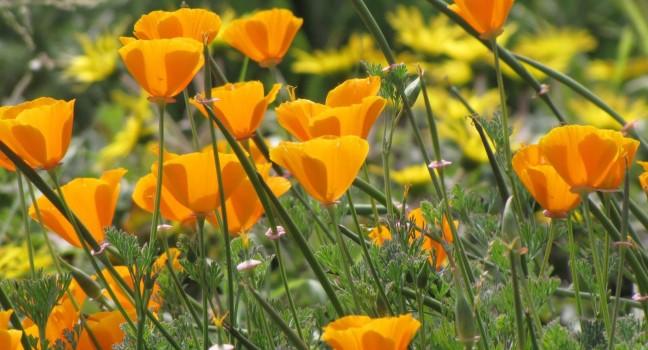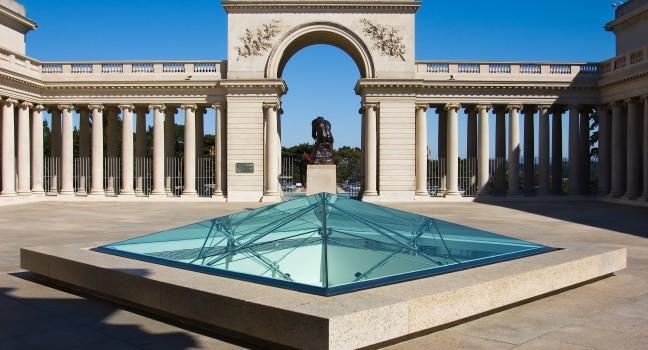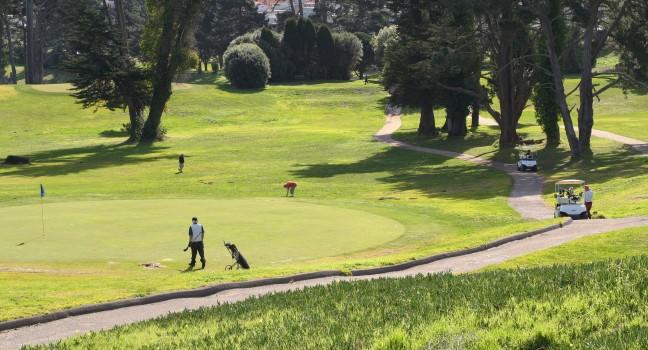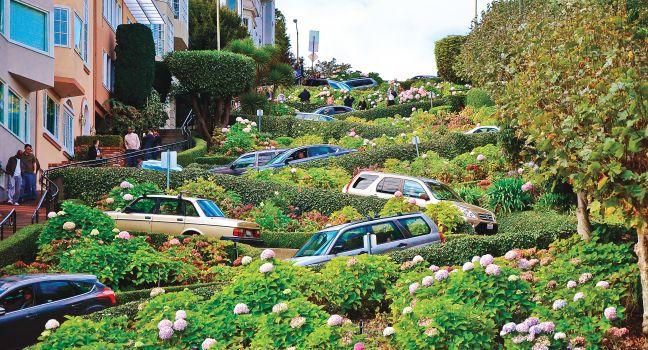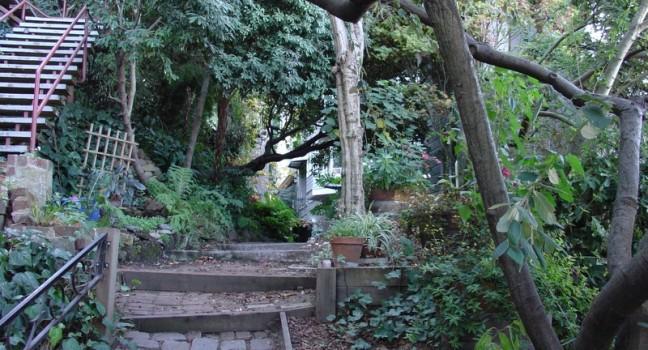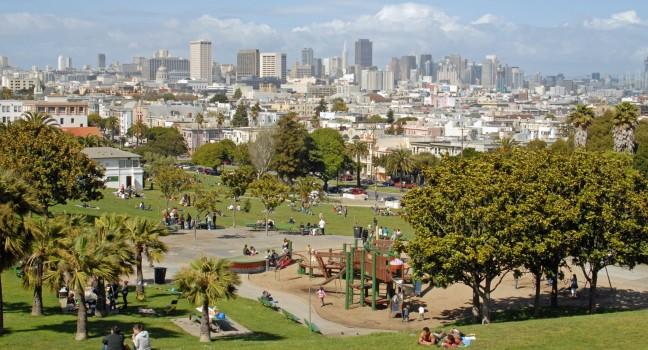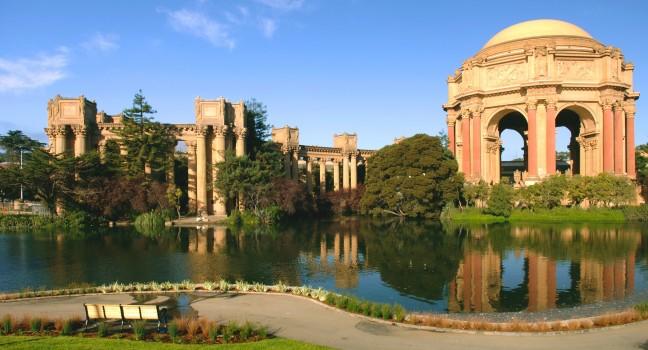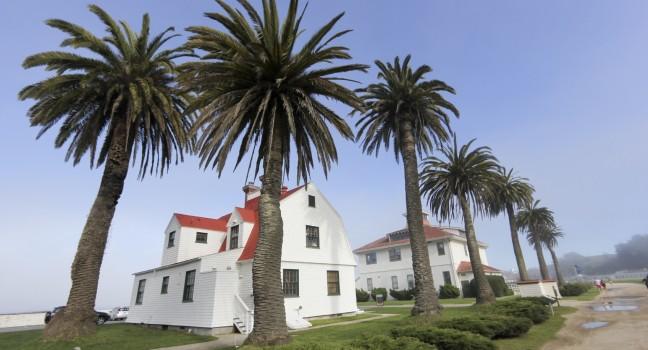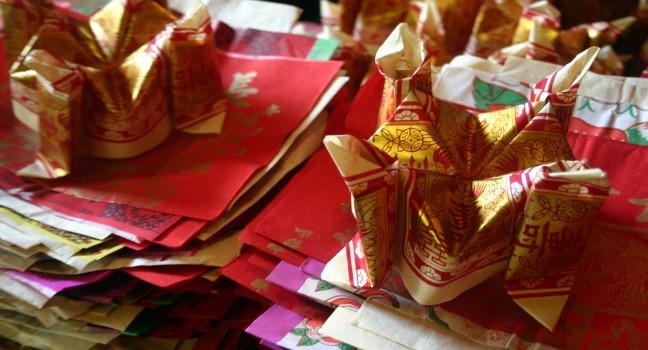When San Franciscans want to spend a day in the woods, they come here. The Presidio has 1,400 acres of hills and majestic woods, two small beaches, and stunning views of the bay, the Golden Gate Bridge, and Marin County. Famed environmental artist Andy Goldsworthy's work greets visitors at the Arguello Gate entrance. The 100-plus-foot Spire, made of 37 cypress logs reclaimed from the Presidio, looks like a rough, natural version of a church spire. The Presidio's best lookout points lie along Washington Boulevard, which meanders through the park.
Part of the Golden Gate National Recreation Area, the Presidio was a military post for more than 200 years. Don Juan Bautista de Anza and a band of Spanish settlers first claimed the area in 1776. It became a Mexican garrison in 1822, when Mexico gained its independence from Spain; U.S. troops forcibly occupied the Presidio in 1846. The U.S. Sixth Army was stationed here until 1994.
The Presidio is now a thriving community of residential and nonresidential tenants, who help to fund its operations by rehabilitating and leasing its more than 700 buildings. Bay Area filmmaker George Lucas's 23-acre Letterman Digital Arts Center, a digital studio "campus," along the eastern edge of the land, is exquisitely landscaped and largely open to the public. If you have kids in tow or are a Star Wars fan yourself, sidle over to the Yoda Fountain (Letterman Drive at Dewitt Road), between two of the arts-center buildings, then take your picture with the life-size Darth Vader statue in the lobby, open to the public on weekdays.
The Presidio Trust, created to manage the Presidio and guide its transformation from military post to national park, has now turned its focus to rolling out the welcome mat to the public. The Presidio’s visitor-serving tenants, such as the Asian-theme SenSpa, the House of Air Trampoline Park, Planet Granite climbing gym, the Walt Disney museum, and a fabulous lodge at the Main Post, have helped with this goal. The rental of old military houses and apartments helps too, with top rents pushing $20,000 a month.
Especially popular is Crissy Field, a stretch of restored marshland along the sand of the bay. Kids on bikes, folks walking dogs, and joggers share the paved path along the shore, often winding up at the Warming Hut, a combination café and fun gift store at the end of the path, for a hot chocolate in the shadow of the Golden Gate Bridge. Midway along the Golden Gate Promenade that winds along the shore is the Gulf of the Farallones National Marine Sanctuary Visitor Center, where kids can get a close-up view of small sea creatures and learn about the rich ecosystem offshore. Just across from the Palace of Fine Arts, Crissy Field Center offers great children's programs and has cool science displays. West of the Golden Gate Bridge is sandy Baker Beach, beloved for its spectacular views and laid-back vibe (read: you'll see naked people here). This is one of those places that inspires local pride.
The Presidio also has a golf course, picnic sites, and the only campground in the city; the views from the many overlooks are sublime. For background and to help plan your time here, stop at the high-tech Visitor Center (210 Lincoln Blvd., 415/561–4323).
